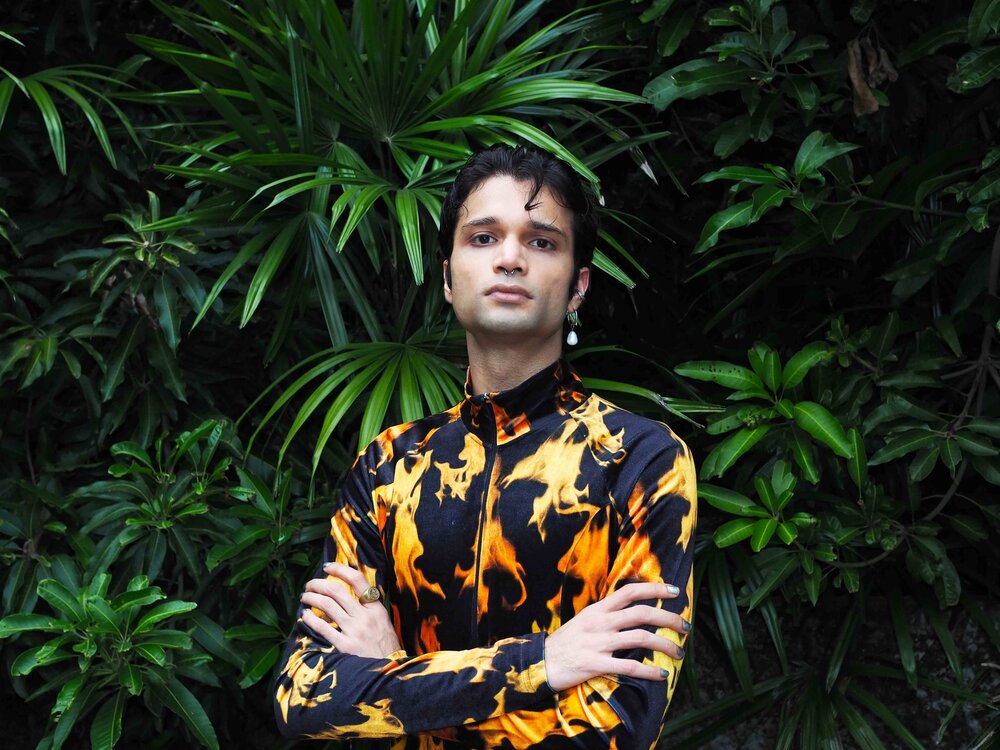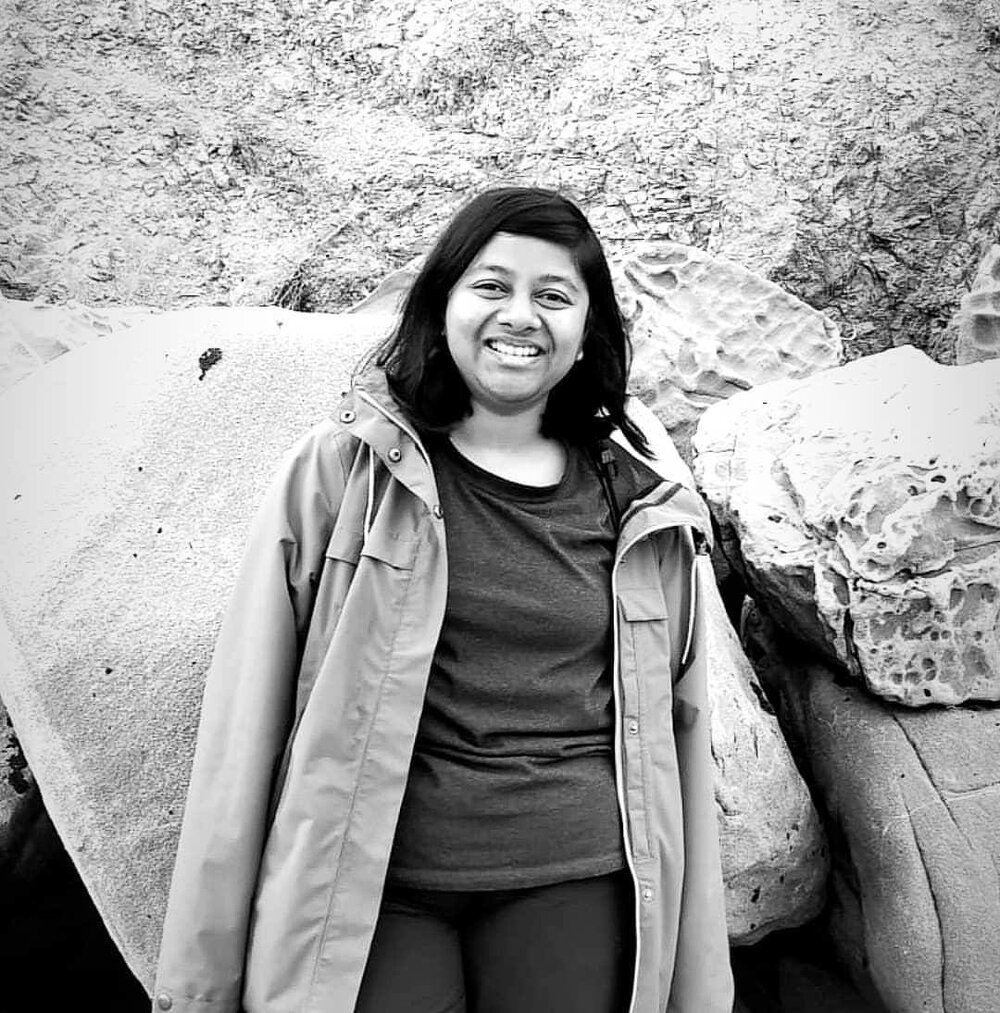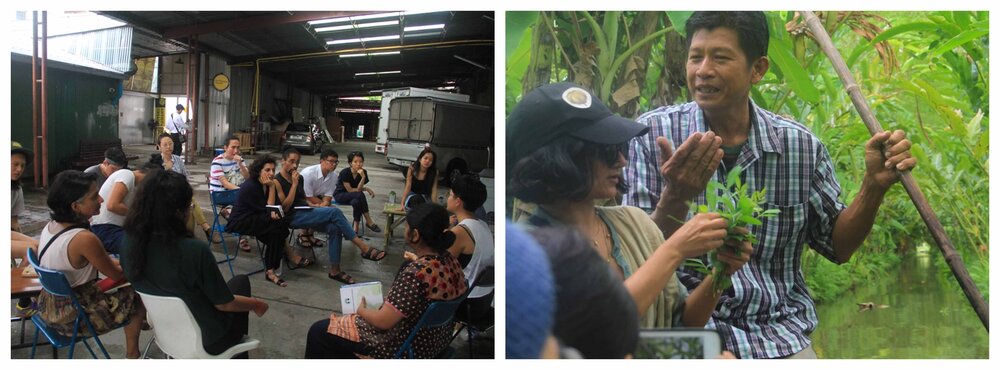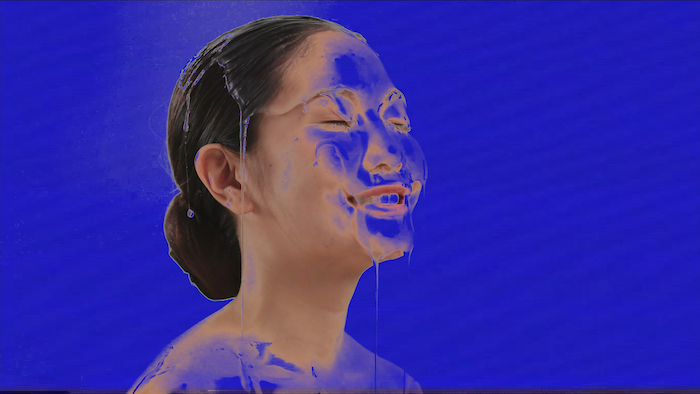
15.01.2021
Artist Ian Tee talks about ethics and solidarity with Abhijan Toto, curator and co-founder together with Pujita Guha of The Forest Curriculum, a multi-platform focused on research and co-learning around the naturecultures of Zomia, forest belt linking South Asia and Southeast Asia.

This is the second text published as part of an exchange between Terremoto and Art & Market, a multimedia platform that presents specialist content on Southeast Asian art, featuring its community’s artistic, curatorial and business practices.
Ian Tee: I’d like to start by asking how you met Pujita? And are there specific conditions The Forest Curriculum is responding to?
Abhijan Toto: Pujita and I have known each other for a long time, because we were from the same hometown and moved in a lot of the same circles. The forest curriculum came about when we reconnected during the student protests in the Jawaharlal Nehru University in New Delhi. I traveled there as part of a contingent of students to support the movement, as an act of solidarity. We were sitting there in that context, listening to these speeches and questioning what the nation state is right now. We started the conversations that would ultimately lead to The Forest Curriculum.
For us, it was never about making exhibitions, nor was it about participating in the art world in ways that we have become overly accustomed. Instead, we are always looking at ways to leverage on the infrastructures and frameworks within which we are forced to operate in and move towards another form of engagement.
This structure is informed by my time working for Council in Paris, which is a curatorial collective founded by Grégory Castér and Sandra Terdjman. Terdjman also co-founded KADIST. They pioneered this form of curatorial practice called the inquiry, which focuses on a specific group of artists and geography, looking at the ways in which artists can intervene and create situations around specific subjects. The first project I worked with them on is The Against Nature Journal, which started as a response to colonial penal codes that criminalize “acts against nature”, such as Section 377 in the Indian and Singapore Penal Codes. We worked with legal agencies in different parts of the world to challenge such laws on a legal basis, and think about what nature means with regard to the law.

In a strange way, art is obsessed with contemporaneity and speed, but at the same time, it allows for certain things to happen over a long period. We are used to artists being like, oh I’ve spent 10 years on this and I’m so conditioned to continue to work on it. This is very different from academia, wherein one is constantly able to produce new engagements and move into different directions, and create an open situation that pulls the world in. We were thinking about these forums together when we launched the Forest Curriculum. It can act as an institution, a framework, a collective, or whatever it needs to be when occupying a particular space and responding to it.
IT: In your essay Notes Towards Imagining a Univers(e)ity Otherwise, you wrote about artistic research as a model for indisciplinary thought. What does indisciplinarity entail, as opposed to terms like interdisciplinary?
AT: Essentially, the essay was talking about Forest Curriculum. One way to describe it is the first draft of a future University, thinking more from the perspective of the undercommons. The idea of indisciplinarity came about through conversations with our colleague, Jessika Khazrik, was mentioned in the essay as well. When we talk about interdisciplinarity or multi-disciplinarity, it still foregrounds an existing disciplinary structure to which we are making mere amendments or supplements to. This plays out across the formation of institutions like middle schools, labs and study centers, which then become reified into universities. We are interested in looking at ways to interrupt this form of knowledge circulation and ask what power structures give us these disciplines.
Hence, we foreground this idea of artistic research as a way of moving from practice towards other forms of circulation and research. We also wrote about indigenous thought as an alternative to the anthropocentric worldview. Artists and filmmakers in Southeast Asia were already doing this, even though their artworks are seen as objects rather than methodologies for framing thought. For example, Apichatpong Weerasethakul’s Uncle Boonmee (2010) can be taken as not just a film, but rather as a series of proposals that can be enacted in other forms as well. This is how we can look at indisciplinarity as the thing that gives form to these modes of working with artistic research.
IT: How does this mode encode forms of responsibility into the process of knowledge production?
AT: This responds to questions of extractivism which is fortunately gaining more currency within academic and artistic discussions. The way we approach it owes a lot to contemporary anthropological discourse, such as the work of Eduardo Viveiros de Castro, looking at how to invent forms of circulation and production which are not extractive. A fundamental dismantling of disciplinary form is crucial to us being able to do this, because these disciplines are built on certain logics of extractivism, via their histories of color within colonialism and imperialism. To move within disciplinary form is to perpetuate such extractivist forms of being. Therefore, when we talk about responsibility, it is precisely thinking of how to work and think with, as opposed to about, as the fundamental mode of being.

We are also referencing the work of our colleague Erik Bordeleau, who is a philosopher of finance, and experiments with reengineering financial capitalism as a liberative force. It has to do with structurally changing the relationship between knowledge and value, such that it belongs to all of us instead of a select few. Through our work, we began to see mirroring between the bank and the university, as well as the ways they are entangled.
IT: The Forest Curriculum has collaborated with a number of institutions and organizations. How would you qualify or frame a successful meaningful collaboration?
AT: Collaborating comes from with others. Therefore, it is always a negotiation borne out of working in a space that belongs not only to us. Fundamentally, we look for mutual stake holding, by asking what the stakes are for those who come into conversation with us and the ways in which cultural capital is distributed via collaboration. An example would be the heavily criticised IdeaCity festival at NTU CCA in Singapore earlier this year, a platform funded by Goldman Sachs and supported by the New Museum coming into Southeast Asia with this kind of extractivist modality. This premise seems like an odd kind place for us to be. However, the curator Vere van Gool placed a huge amount of trust in us to not do anything in Singapore and instead we went to our community in Los Bānos, Philippines, and created an engagement there.
Coming back to this point on the redistribution of cultural capital, it’s important that things go out of our hands so situations can emerge on their own. When we ran the 2019 Summer School in Bangkok, all sorts of beautiful projects, collectives and even new romantic relationships formed as a result of spending a month together. The programe drew in participants from various backgrounds, from club kids to academics and activists. It was a space for sharing time and energy together. So when we talk about a successful collaboration, it is not just about us collaborating with an institution, but rather creating an overall collaborative environment where many things can happen organically.
IT: Speaking about the Summer School programe, the second edition was supposed to happen in August 2020.
AT: One of our longtime collaboration partners has been Mijoo Park, who runs the RAT School of Art in Seoul. We were supposed to work with her on the summer school and organize a programe in Jeju Island, Korea. Due to the current pandemic situation, it has evolved into a series of online talks happening over four months, involving collaborators we have known for some time and participants from the last summer school who are returning as speakers. The series will start on 13 October 2020 and goes on until the middle of January 2021.
It is also a great opportunity for us to invite people that we would otherwise have had a difficult time flying into the region. For example, one of the first speakers is going to be the Danish-Korean artist Jane Jin Kaisen, who was one of the artists exhibiting at Korean Pavilion in the 2019 Venice Biennale. We see it as a continuation of the programe I mentioned earlier in Los Bānos called The Forest is in the Cities in the Forest. We are thinking about what it means to occupy the space of the forest right now, but not also drumming on about the pandemic.

IT: How are you two sustaining your respective practices? Is there a piece of advice you were given or a lesson learnt you could share?
AT: People always ask us: how is Forest Curriculum funded? How do you continue running this? And there’s a very simple answer, which is that we’re very poor. We have been lucky to receive funding for certain individual programes, but there haven’t been any structural grants that entirely supported us. We are also fortunate to have friends and supporters who are constantly on the lookout for us. Recently, a friend of ours Kai Altmann (Hityasha) nominated us for a COVID-19 relief grant. Even though it’s not a large sum of money, it means a lot in our situation when we are already struggling and our programes are being cancelled.
I do not like the word advice, but I think that it is important to gravitate towards people who are as deeply invested in the ideas that you are working on. It creates conditions to work together and solve problems, whether it is finding a couch to crash on or some money to invite some speakers over.
I think that a lot of this came from my time working at the Dhaka Art Summit in Bangladesh, which is a logistically challenging country. Looking from the outside, it seems like a private foundation with unimaginable resources at its disposal, but you will be surprised by how much of the exhibition is actually carried in on backpacks into the country. We like to call it a Zomian attitude of continuing flows and finding different channels. That is how we approach and structure the way that we work.

IT: You are artistic director for A House in Many Parts. What were the aims and do you think you have achieved them?
AT: A House In Many Parts is an interdisciplinary festival, that came together out of a collaboration between the Goethe Institut in Thailand, the French Embassy, through the Fonds Franco-Allemand, and as such was aimed at providing a platform for collaboration between Thai, German and French artists. Of course, due to the circumstances of the pandemic, modes of international exchange and collaboration have had to be radically reimagined. With this in mind, I proposed a format whereby practitioners in France and Germany would be invited to share a “care package” of some kind—which could take the form of.an instruction, a poem, an artwork with a practitioner from Thailand, who would then respond to this, and we would the develop a gathering around their response. I was thinking also about infrastructures and logistical networks, which are an interest of the Forest Curriculum, and have become particularly visible in their limits in this year, and about the idea of touch, coupled with the idea of risk as it has emerged during this period. I invited the Paris-based collective Council, curator Lucas Morin, Berlin-based Sofia Lemos, the Aerocene Foundation and the collective Manifesto for Artists in a Strong State, based in the Bauhaus in Weimar as the correspondents, with Filmvirus, the Monitor Lizard House, Thanapol Virulhakul, Chulayarnnon Siriphol, Jeanne Penjan Lassus and Wirunwan Pitaktong being the Bangkok-based respondents.
Of course, given the momentum of political revolution brewing at the moment here in Thailand, the festival was very much aimed at providing a platform for experimentation and the expression of aspirations for political futures of the moment. Indeed, the title itself responds to the idea of the need for the imagination of collective building of habitable futures that a moment of revolution asks of us, as cultural workers, and as participants in its moment, and to the broad intersectional aspiration that the leaders of the movement have articulated. So for example, Council offered The Against Nature Journal as the object around which the collaboration could evolve, and responding to this Jeanne Penjan Lassus and Victoria Pitaktong invited activist groups involved in organizing the LGBTQ+-led protests and artists together to create an evening revolving around issues of gender and sexuality, particularly in relation to language and the law as they have emerged in Thai society. Another example is the project that developed between the Manifesto for Artists In A Strong State and Thanapol Virulhakul. The Weimar-based collective offered a project titled Bauhaus 101, made during the Bauhaus 100 anniversary, which provided instructions on how to turn Bauhaus objects into objects to be used in protests. Virulhakul responded to this with a performance built around a set of Bauhaus chairs that could be unfolded to be turned into barricades. The performance was title Act of Paddling, calling to mind the inflatable rubber ducks used by the protesters to resist water cannons, and that have become emblematic of the protests here in Thailand. Similarly, Chulayarnnon Siriphol and Liew Niyamkorn, working together with Sofia Lemos, produced a new work for public space titled Methylene Blue, referring to the blue dye used by the police to tag protesters. They developed a performance version of this work, around which we developed an evening of programming, inviting musicians involved in the political situation in various ways, from artist Nuh Peace, to pop singer Pyra, indie band Dogwhine, and the rap group Rap Against Dictatorship. Ultimately, we had about 10 events in as many venues spread across the city, and we had only 3 weeks to plan it! This would not have been possible without a collective spirit of solidarity and the need to articulate new visions in the current political situation that we all felt, and I was incredibly happy to be able to hold space for these experiments and articulations.
Comments
There are no coments available.